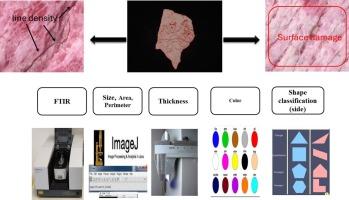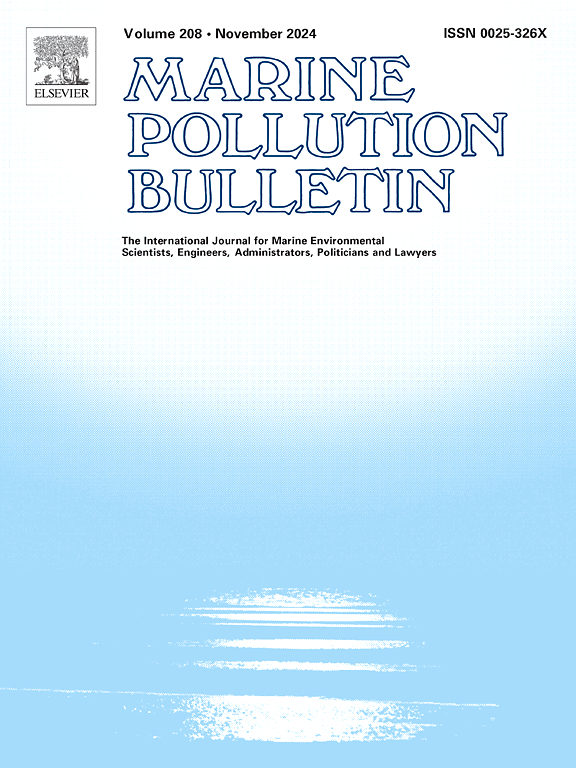Characterization, surface deformation analysis and sources of small plastic fragments collected in diverse environments of Egypt
IF 5.3
3区 环境科学与生态学
Q1 ENVIRONMENTAL SCIENCES
引用次数: 0
Abstract
This study investigates the sources and morphological characteristics of plastic waste across diverse Egyptian environments—marine (Mediterranean and Red Seas), freshwater (River Nile), and terrestrial (urban streets). Predominant plastics found in various marine areas include polyethylene and polypropylene, originating from both maritime and urban sources. In the Mediterranean, these plastics show higher levels of UV-induced degradation, resulting in fragments measuring 18–22 mm in size and 1–1.2 mm in thickness. The River Nile exhibits polystyrene fragments, with average sizes of 20–26 mm and thicknesses of 0.7–0.9 mm influenced by urban and agricultural runoff. Urban streets display a mix (polypropylene, polyethylene, and polystyrene), with thicker fragments (averaging 1.8 mm) due to mechanical wear and pollution. Analysis shows varying surface loss: Mediterranean (29 %), Red Sea (20–23 %), freshwater (18 %), and urban streets (up to 30 %), indicate differential degradation influenced by environmental conditions and human activities. These findings underscore the need for targeted policies to mitigate plastic pollution across Egypt's landscapes, crucial for global conservation efforts.

在埃及不同环境中采集的小型塑料碎片的特征、表面变形分析和来源。
这项研究调查了埃及不同环境中塑料垃圾的来源和形态特征--海洋(地中海和红海)、淡水(尼罗河)和陆地(城市街道)。在不同海域发现的主要塑料包括聚乙烯和聚丙烯,来源于海洋和城市。在地中海,这些塑料在紫外线诱导下的降解程度较高,产生的碎片大小为 18-22 毫米,厚度为 1-1.2 毫米。尼罗河中的聚苯乙烯碎片平均大小为 20-26 毫米,厚度为 0.7-0.9 毫米,受到城市和农业径流的影响。城市街道显示出混合结构(聚丙烯、聚乙烯和聚苯乙烯),由于机械磨损和污染,碎片较厚(平均 1.8 毫米)。分析表明表面损失各不相同:地中海(29%)、红海(20%-23%)、淡水(18%)和城市街道(高达 30%),表明受环境条件和人类活动的影响,退化程度各不相同。这些发现突出表明,有必要制定有针对性的政策,以减轻埃及各地的塑料污染,这对全球保护工作至关重要。
本文章由计算机程序翻译,如有差异,请以英文原文为准。
求助全文
约1分钟内获得全文
求助全文
来源期刊

Marine pollution bulletin
环境科学-海洋与淡水生物学
CiteScore
10.20
自引率
15.50%
发文量
1077
审稿时长
68 days
期刊介绍:
Marine Pollution Bulletin is concerned with the rational use of maritime and marine resources in estuaries, the seas and oceans, as well as with documenting marine pollution and introducing new forms of measurement and analysis. A wide range of topics are discussed as news, comment, reviews and research reports, not only on effluent disposal and pollution control, but also on the management, economic aspects and protection of the marine environment in general.
 求助内容:
求助内容: 应助结果提醒方式:
应助结果提醒方式:


